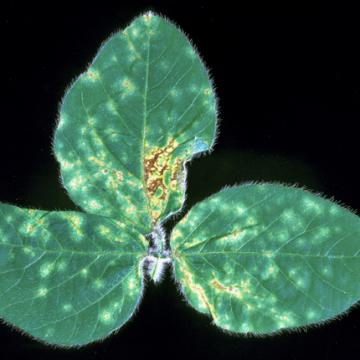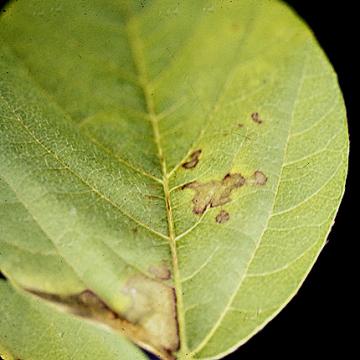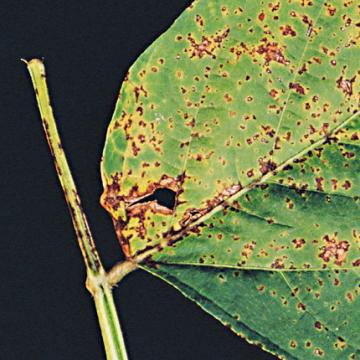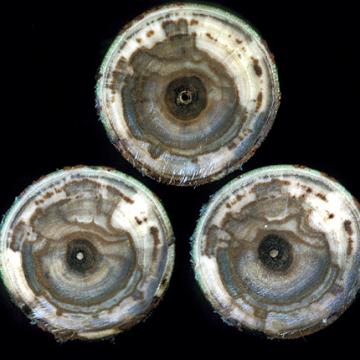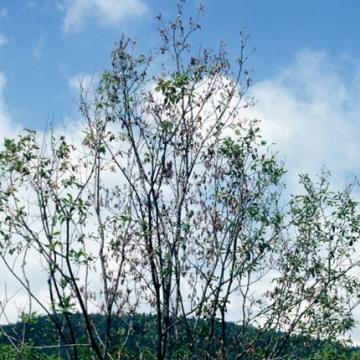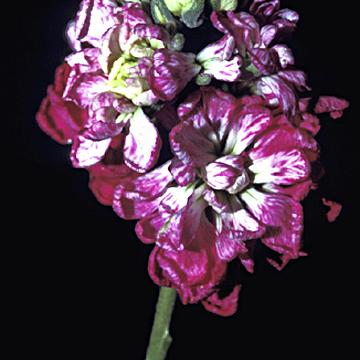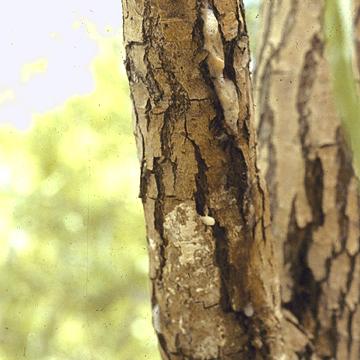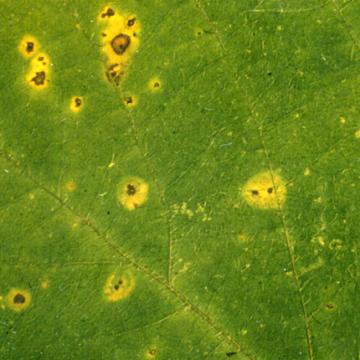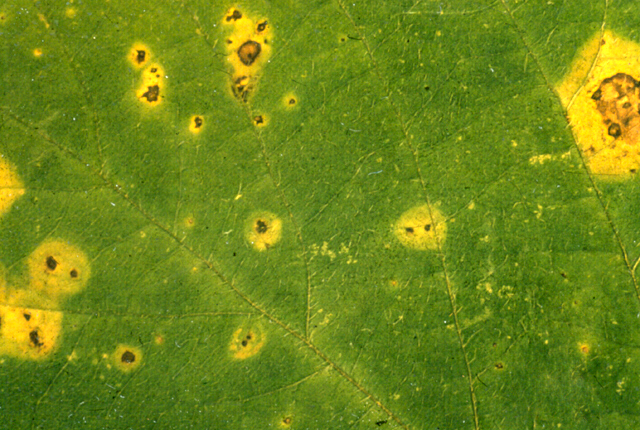DISEASE: Bacterial blight
HOST: Soybean
Leaves with yellowish brown necrotic lesions. Lesions also may be yellow to light brown and bordered by yellowish green halos. Lesions occur on stems, petioles, and pods.
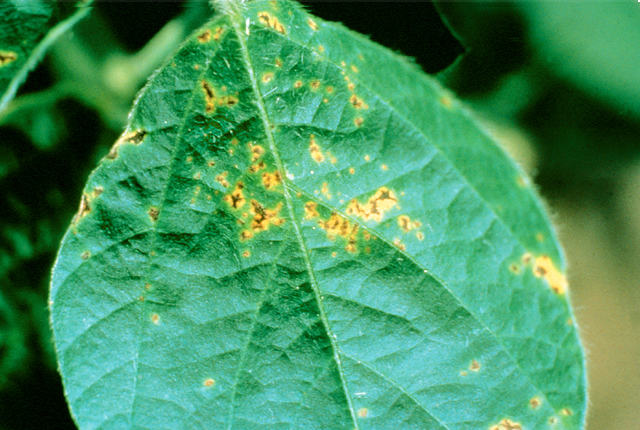
Bacterial blight | Soybean
DISEASE: Bacterial blight
HOST: Soybean (Glycine max)
PATHOGEN: Pseudomonas syringae pv. glycinea
SOURCE: J. B. Sinclair
DISEASE: Bacterial leaf spot
HOST: Soybean
Early symptoms of bacterial blight.
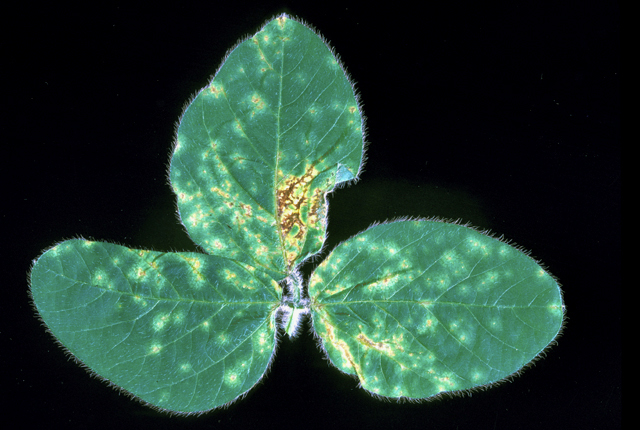
Bacterial leaf spot | Soybean
DISEASE: Bacterial leaf spot
HOST: Soybean (Glycine max)
PATHOGEN: Pseudomonas syringae pv. glycinea
SOURCE: D. Cupples
DISEASE: Bacterial leaf spot
HOST: Soybean
Leaf with large, light brown necrotic lesions.
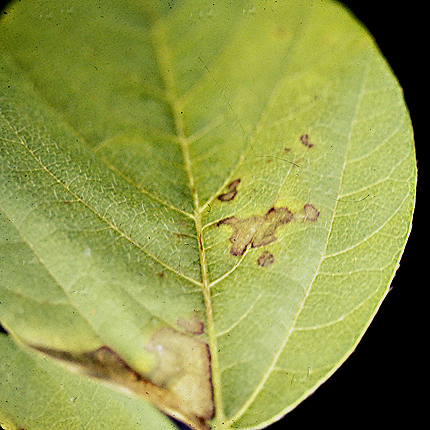
Bacterial leaf spot | Soybean
DISEASE: Bacterial leaf spot
HOST: Soybean (Glycine max)
PATHOGEN: Pseudomonas viridiflava
SOURCE: R. Gitaitis
DISEASE: Bacterial pustule
HOST: Soybean
Early symptoms are minute, pale green spots on young leaves. Later, small pustules form in the center of spots, best observed on underside of leaves. Spots vary in size and darken with age and lesions coalesce. Dead areas are torn away by wind.
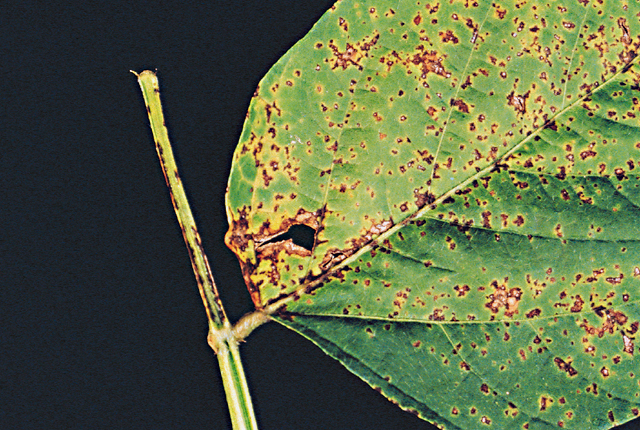
Bacterial pustule | Soybean
DISEASE: Bacterial pustule
HOST: Soybean (Glycine max)
PATHOGEN: Xanthomonas axonopodis pv. glycines
PATHOGEN SYNONYM: Xanthomonas campestris pv. glycines
SOURCE: APS
DISEASE: Bacterial wilt and dieback
HOST: Willow
Cross sections of the characteristic "watermark stain" of diseased wood. Wilt and dieback occur as disease progresses.
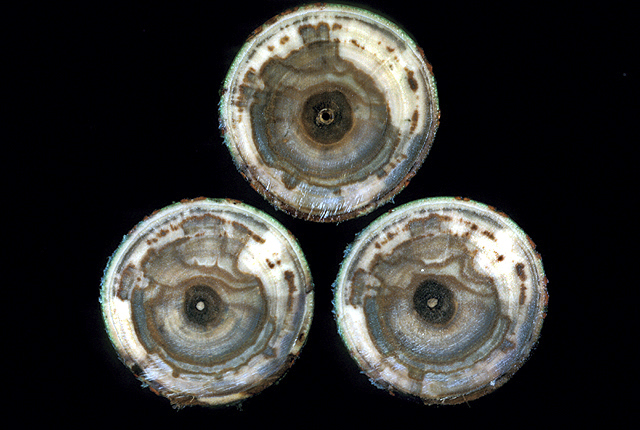
Bacterial wilt and dieback | Willow
DISEASE: Bacterial wilt and dieback
HOST: Willow (Salix sp.)
PATHOGEN: Brenneria salicis
PATHOGEN SYNONYM: Erwinia salicis
SOURCE: Y. Sakamoto, M. Goto
DISEASE: Bacterial wilt and dieback
HOST: Willow
Severely diseased tree with dieback symptoms.

Bacterial wilt and dieback | Willow
DISEASE: Bacterial wilt and dieback
HOST: Willow (Salix sp.)
PATHOGEN: Brenneria salicis
PATHOGEN SYNONYM: Erwinia salicis
SOURCE: Y. Sakamoto, M. Goto
DISEASE: Phytoplasma disease
HOST: Stock
The disease causes malformation and arrested development of flowers.
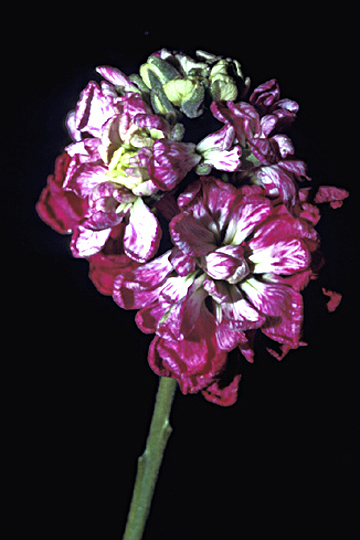
Phytoplasma disease | Stock
DISEASE: Phytoplasma disease
HOST: Stock (Matthiola incana)
PATHOGEN: 'Candidatus Phytoplasma' sp.
PATHOGEN SYNONYM: Phytoplasma (undefined)
SOURCE: R. Raabe
DISEASE: Slime flux
HOST: Willow
Foam at site of infection. Slime fluxes are common but the causal agent has not been identified.
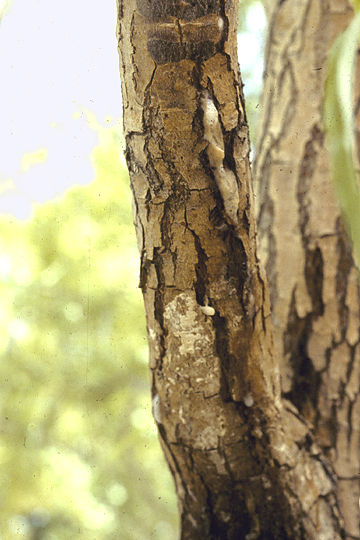
Slime flux | Willow
DISEASE: Slime flux
HOST: Willow (Salix sp.)
PATHOGEN: Causal agent unknown
SOURCE: S. Thomson



